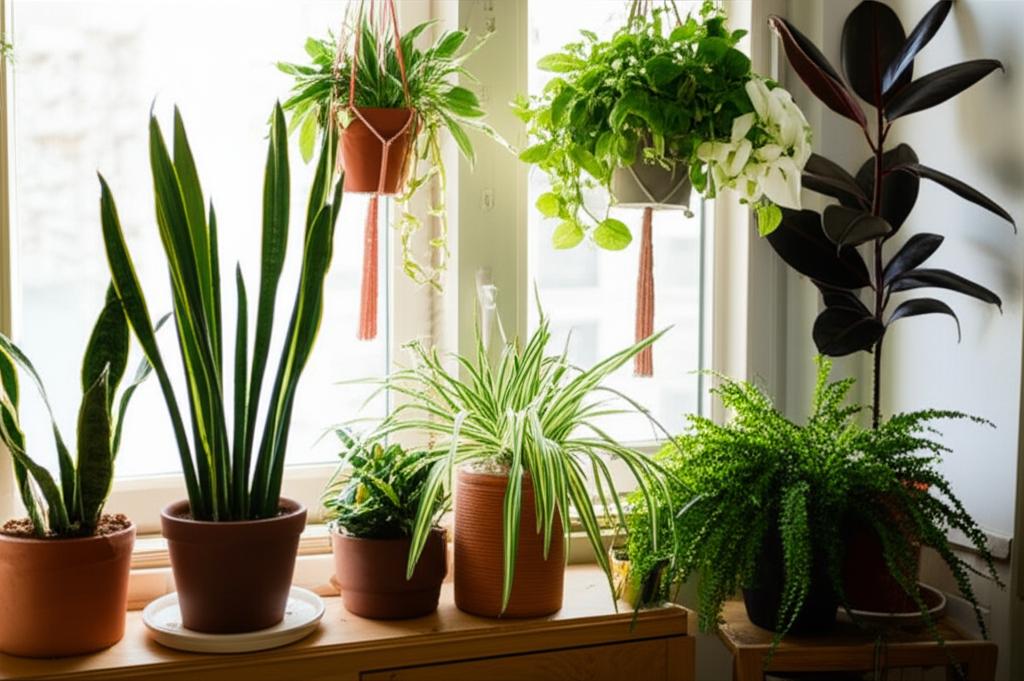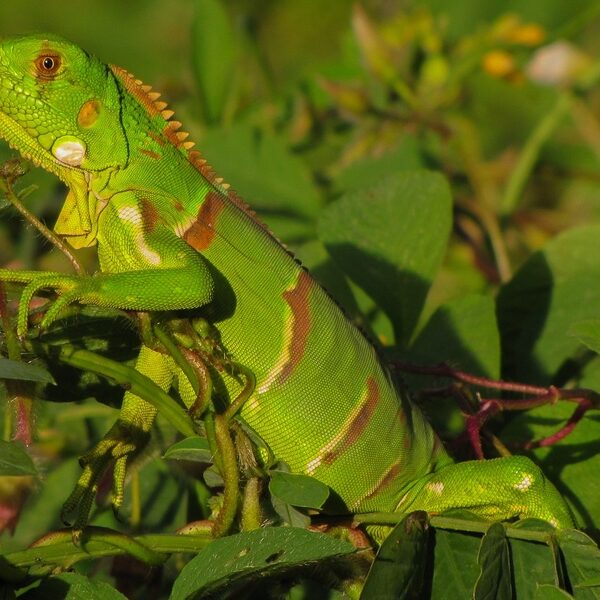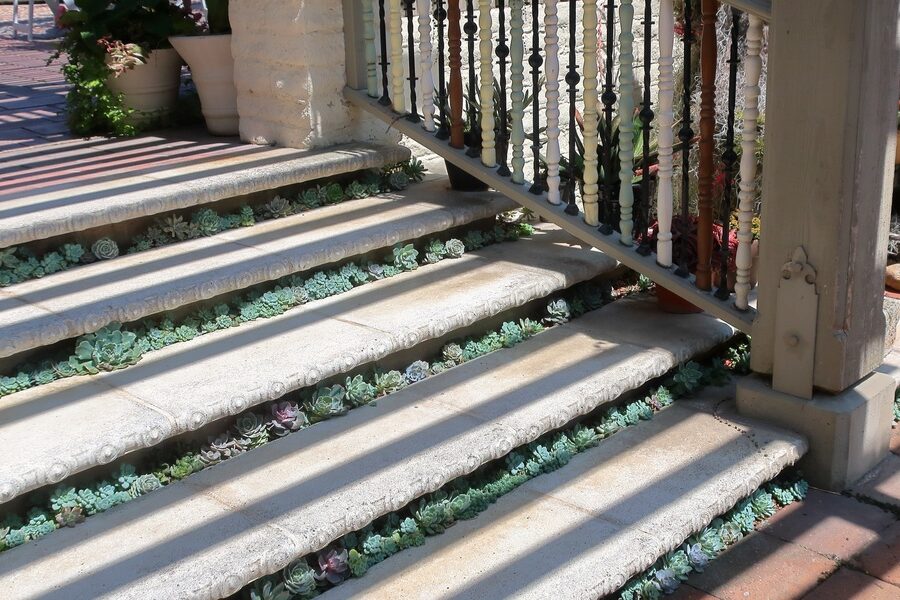- Plants can reduce some VOCs and particulates in controlled tests (notably the 1989 NASA Clean Air Study), but they are best used alongside ventilation and mechanical filtration.
- Choose specimens that match your light, space and pet-safety needs—start with low-care options like snake plant or ZZ for tricky spots.
- Placement and size matter: more leaf area and larger pots increase capacity (a useful guideline is one plant per ~100 sq ft, scaled up with bigger specimens).
- Use targeted plants near pollutant sources—English ivy near printers, Areca or bamboo palms in dry rooms—to boost local effectiveness.
- Pick one or two plants to start, prioritize safety around pets, and pair your new houseplants with proper ventilation or a HEPA/activated-carbon filter for meaningful indoor air improvements.
- Plants can reduce some VOCs and particulates in controlled tests (notably the 1989 NASA Clean Air Study), but they are best used alongside ventilation and mechanical filtration.
- Choose specimens that match your light, space and pet-safety needs—start with low-care options like snake plant or ZZ for tricky spots.
- Placement and size matter: more leaf area and larger pots increase capacity (a useful guideline is one plant per ~100 sq ft, scaled up with bigger specimens).
- Use targeted plants near pollutant sources—English ivy near printers, Areca or bamboo palms in dry rooms—to boost local effectiveness.
- Pick one or two plants to start, prioritize safety around pets, and pair your new houseplants with proper ventilation or a HEPA/activated-carbon filter for meaningful indoor air improvements.
12 Best Air Purifying Plants
In 1989 the NASA Clean Air Study put a spotlight on how certain houseplants can remove specific indoor pollutants under controlled conditions.
Indoor air matters because common sources—paints, cleaning products, furnishings, printers and cooking—release volatile organic compounds (VOCs) and particulates that build up in poorly ventilated rooms. Plants aren’t a cure-all, but they can reduce some contaminants and improve perceived air freshness when combined with ventilation or a mechanical filter (one plant per ~100 sq ft is a simple guideline many growers use).
This guide lists 12 evidence-backed, easy-to-find species organized into three practical groups: top all-around purifiers, plants that target specific pollutants or boost humidity, and low-maintenance/medicinal or decorative options. For each plant you’ll get what it helps remove, placement and care tips, and pet-safety notes so you can choose the right specimens for your home or office.
Top all-around air purifiers for homes
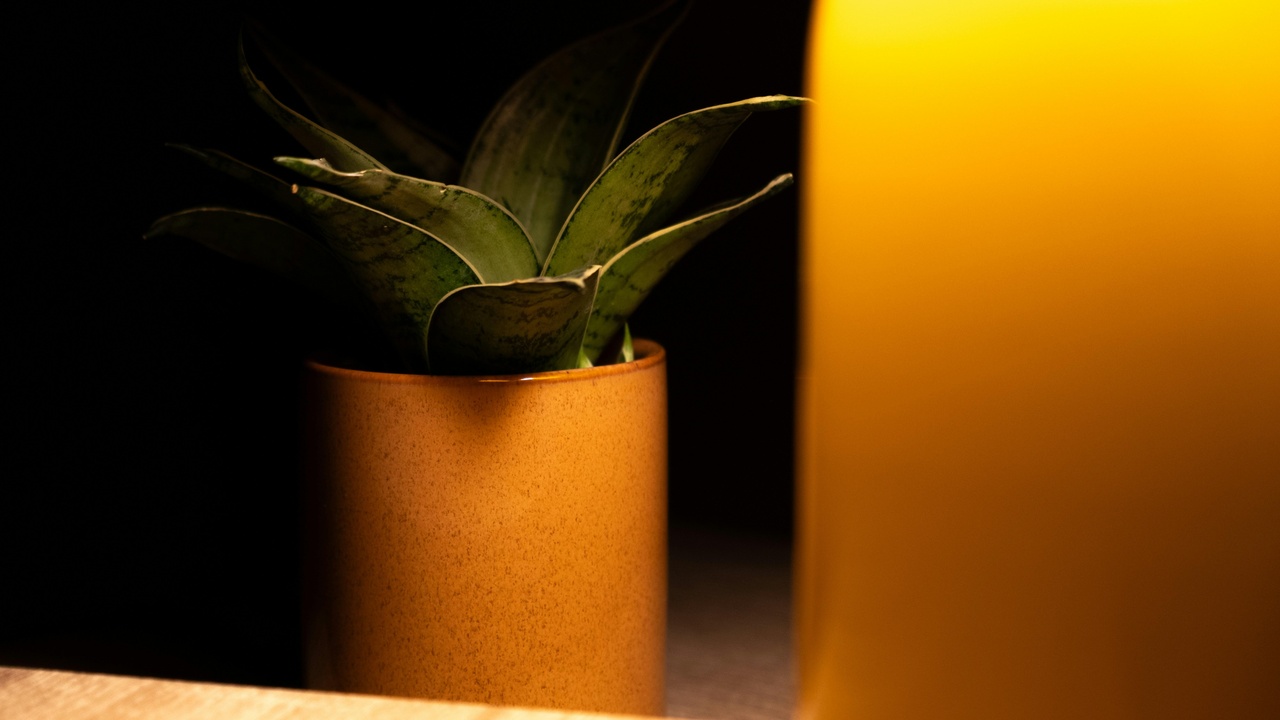
This group contains hardy species that tolerate typical indoor conditions and have shown broad-spectrum removal of VOCs like formaldehyde and benzene in chamber tests (NASA Clean Air Study, 1989). Real-room results vary — chamber tests used sealed environments — but these plants still make practical additions to bedrooms, offices and common areas. Place them where air circulates: near windows, beside seating areas, or over vents; larger plants and more soil generally increase capacity.
1. Snake Plant (Sansevieria trifasciata) — durable, low-light VOC removal
Snake plant is one of the easiest indoor plants and is often recommended for bedrooms and offices for its tolerance of low light and infrequent watering. Lab work including NASA’s 1989 tests highlighted Sansevieria for formaldehyde and benzene uptake in sealed chambers; follow-up observations find it remains useful in real interiors because it tolerates neglect.
Place a medium 8–10″ pot on a bedroom dresser or office corner; one plant per ~100 sq ft is a practical starting point. Care is simple: bright, indirect light is best but it will survive low light, and water only when the soil is dry (every 2–6 weeks depending on season).
Pet-safety: snake plant is mildly toxic if ingested, so keep it out of reach of cats and dogs or use a high shelf or decorative barrier.
2. Spider Plant (Chlorophytum comosum) — fast-growing, excellent beginner option
Spider plant has a reputation as an easy, fast-growing houseplant that helps with air cleaning and capturing particulates. It featured in NASA’s experiments and in subsequent small-scale tests, which showed reductions in certain VOCs and measurable capture of airborne dust on leaves.
Use a hanging basket over a kitchen or bathroom or place one near a vent to catch particulates and grease. Cultivars like ‘Variegatum’ and ‘Vittatum’ are widely available. Spider plants tolerate variable conditions and propagate quickly from offshoots, making them ideal for beginners.
Pet-safety: spider plants are non-toxic to cats and dogs, though some pets are attracted to nibbling the arching leaves—watch for overenthusiastic chewers.
3. Peace Lily (Spathiphyllum) — flowering purifier that removes VOCs
Peace lily is known for its white spathes and was one of the species that showed VOC removal (formaldehyde, benzene) in lab tests; flowering plants may register higher metabolic activity when in bloom. Its glossy leaves also trap dust.
Place a 10–12″ mature peace lily in a bright living room corner or office with indirect light to improve perceived air freshness. Keep soil evenly moist and avoid direct noon sun, which can scorch leaves. Fertilize lightly during the growing season for consistent blooms.
Pet-safety: peace lily contains calcium oxalate crystals and is toxic to cats and dogs — keep it well out of reach or avoid it in pet households.
4. Boston Fern (Nephrolepis exaltata) — humidity booster and particulate reducer
Boston fern combines moisture-loving habits with leaf surfaces that help reduce airborne dust and particulates; ferns were among species that performed well in NASA-style chamber tests for some contaminants. They also increase local humidity through transpiration, which can make indoor air feel fresher.
Hang a Boston fern in a bright bathroom or over a tub where humidity is higher, or use it near a humidifier to create a lush microclimate. They prefer indirect bright light, regular misting, and consistently moist (but not waterlogged) soil.
Pet-safety: Boston fern is generally considered non-toxic, a good option for pet-friendly homes.
Plants that target specific pollutants and manage humidity
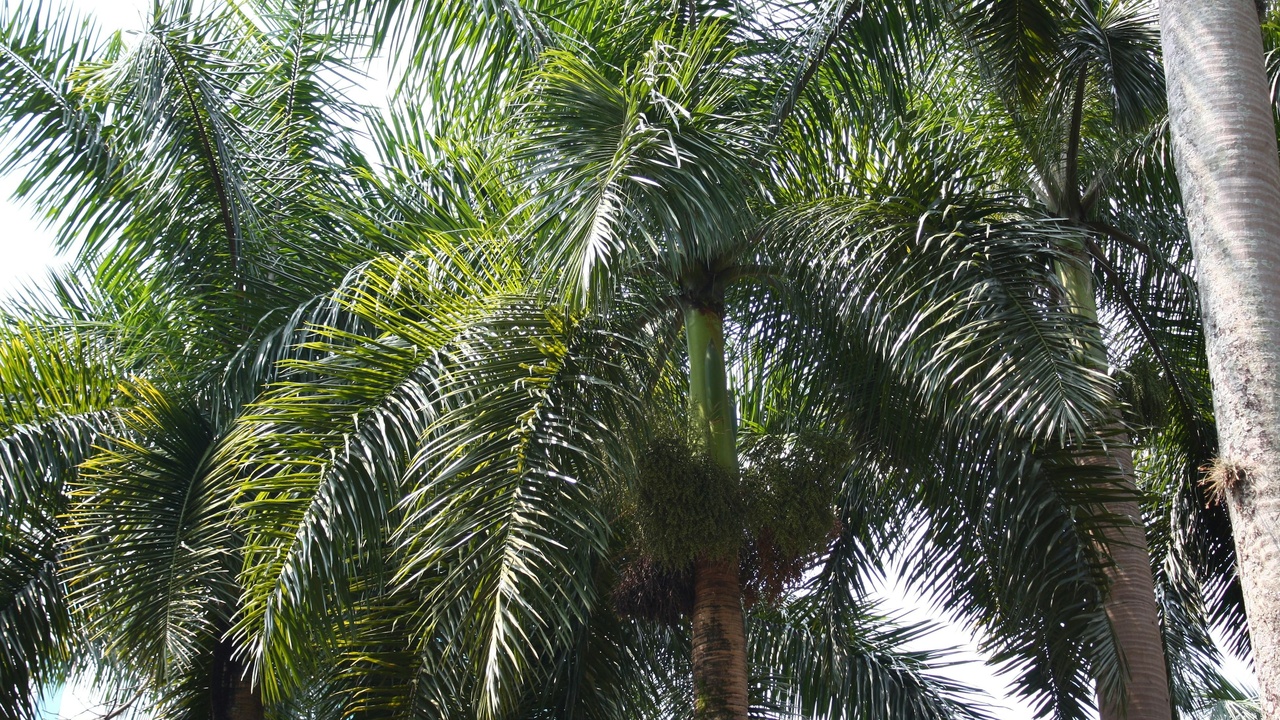
Some species are particularly useful when you have a known concern—formaldehyde from furniture, benzene from paints or vehicle exhaust tracked indoors, or dry winter air. NASA’s 1989 results and later controlled studies associate palms, ivy and certain broad-leaf plants with reductions in specific VOCs; larger leaf area, more soil volume and placement near pollutant sources improve results. Put these plants near garages, home offices with printers, or heating sources to target those problem areas.
5. Areca Palm (Dypsis lutescens) — humidity and gentle VOC reduction
Areca palm is a decorative, multi-stemmed palm that raises humidity through transpiration while helping dilute some VOCs identified in chamber tests. Its graceful fronds add substantial leaf area, which contributes to air-contact surface.
Use a larger planter (12″ or bigger) in living rooms or near dry heating sources; bright, indirect light suits it best. Regular dusting of fronds and occasional pruning of older stems keep the palm healthy. Larger specimens move noticeably more air through transpiration than small pots.
Pet-safety: Areca palm is generally non-toxic and works well in family rooms, though it does require moderate maintenance compared with succulents.
6. English Ivy (Hedera helix) — effective at trapping airborne particulates and some VOCs
English ivy has performed well in tests for reducing benzene and formaldehyde and is also effective at trapping particulates on its leaves, making it useful near printers, craft areas or lightly ventilated workspaces. Studies after NASA’s work confirmed ivy’s ability to remove certain airborne contaminants in sealed settings.
Hang ivy in a home office, over a shelf near a copier, or train it on a trellis by a window. Use a 6–10″ hanging basket for compact growth and keep soil evenly moist in bright, indirect light; trim to control vigor.
Pet-safety: English ivy is toxic to cats and dogs if ingested—place it well out of reach or avoid it in pet households.
7. Bamboo Palm (Chamaedorea seifrizii) — compact palm that tackles formaldehyde and xylene
Bamboo palm is a compact indoor palm that showed effectiveness against formaldehyde and xylene in laboratory trials. Its fine fronds increase leaf surface area in a relatively small footprint, useful for medium rooms and offices.
Place a 10–14″ pot on the floor or a pedestal in a bright, indirect-light corner (near a TV or bookshelf), and dust leaves periodically. Water moderately and ensure good drainage to avoid root rot; larger pots with more soil tend to perform better for pollutant uptake.
Pet-safety: bamboo palm is generally regarded as non-toxic, making it a good choice for households with pets.
8. Rubber Plant (Ficus elastica) — large-leafed VOC absorber and showpiece
Rubber plant’s large, glossy leaves give it a strong surface area-to-volume ratio, which helps with VOC uptake in chamber studies; large-leaf specimens often register stronger lab performance for VOC removal than tiny-leaf species. It also makes a striking living-room specimen.
Use a 14–18″ rubber plant as a floor focal point near a workspace or seating area where it can intercept room air. Provide bright, indirect light, consistent watering (allow topsoil to dry slightly between waterings), and occasional leaf-cleaning to keep stomata clear.
Pet-safety: the milky sap can irritate skin and mucous membranes and is toxic if ingested—keep away from pets and children.
Low-maintenance, medicinal, and decorative options
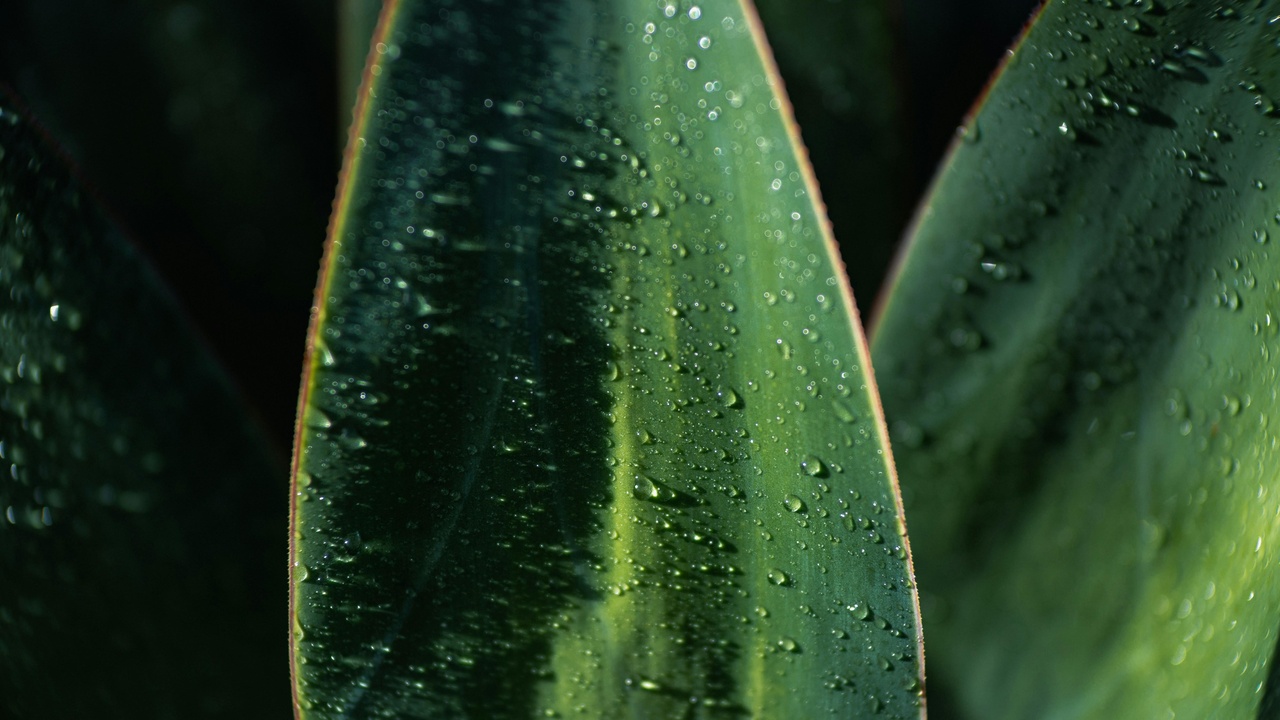
This group is for people who want plants that are easy to care for, offer an extra benefit (like aloe’s gel), or provide colorful blooms. Their air-cleaning effects are often modest in real rooms, but aesthetics and low maintenance are valid reasons to add them. Combine these houseplants with ventilation or an air purifier for meaningful improvements.
9. Aloe Vera (Aloe barbadensis) — medicinal benefits plus formaldehyde removal
Aloe provides a practical dual purpose: topical gel for minor burns and cuts, and modest VOC uptake in chamber studies (including formaldehyde). Aloe has a long traditional use history and is widely sold in 6–8″ nursery pots for kitchens.
Keep an aloe on a sunny kitchen sill—bright light and well-draining soil are essential. Water sparingly (allow soil to dry between deep waterings) and harvest single leaves as needed for first aid or skin care.
Pet-safety: aloe is mildly toxic to cats and dogs; place it out of reach if you have curious pets.
10. ZZ Plant (Zamioculcas zamiifolia) — near-indestructible low-light purifier
ZZ plant is extremely low-maintenance and tolerates low light and long gaps between waterings, which makes it ideal for offices, shaded hallways and rental units. Tough, waxy-leaved species like ZZ often perform respectably in VOC uptake tests because their leaves remain active and dust-free.
Use a 6–12″ ZZ on a credenza or dark hallway table; it will survive indirect light and infrequent watering. Avoid overwatering—ZZ stores water in its rhizomes and prefers to dry slightly between waterings.
Pet-safety: ZZ is moderately toxic if ingested, so keep it away from pets and children.
11. Gerbera Daisy (Gerbera jamesonii) — flowering option that can target benzene and trichloroethylene
Gerbera daisy adds bright color and has shown the ability to absorb benzene and trichloroethylene in sealed-environment tests. Flowering plants like Gerbera can make bedrooms and living areas feel fresher while providing a visual boost.
Place a 6–8″ pot on a sunny sill and deadhead spent blooms to encourage more flowers. Gerbera prefers high light, regular feeding during bloom season, and consistent moisture in well-draining potting mix.
Pet-safety: many sources list Gerbera as generally non-toxic, but cultivar information varies—double-check if pets are likely to sample blooms or foliage.
12. Chrysanthemum (Chrysanthemum morifolium) — strong lab performer (with pet-safety caveat)
Chrysanthemum was among the top performers in NASA’s 1989 tests, removing ammonia, benzene and formaldehyde effectively in chamber conditions. Many people use potted mums as seasonal displays to combine bloom color with air-cleaning potential.
Use chrysanthemum as a short-term display in a bright living room window during bloom; they require high light, cool nights and regular watering. Because their peak performance is seasonal, treat them as bloom-time additions rather than year-round solutions.
Pet-safety: chrysanthemums are toxic to cats and dogs. Avoid in homes with curious pets unless the plant is placed well out of reach.
Summary
- Plants can reduce some VOCs and particulates in controlled tests (notably the 1989 NASA Clean Air Study), but they are best used alongside ventilation and mechanical filtration.
- Choose specimens that match your light, space and pet-safety needs—start with low-care options like snake plant or ZZ for tricky spots.
- Placement and size matter: more leaf area and larger pots increase capacity (a useful guideline is one plant per ~100 sq ft, scaled up with bigger specimens).
- Use targeted plants near pollutant sources—English ivy near printers, Areca or bamboo palms in dry rooms—to boost local effectiveness.
- Pick one or two plants to start, prioritize safety around pets, and pair your new houseplants with proper ventilation or a HEPA/activated-carbon filter for meaningful indoor air improvements.
